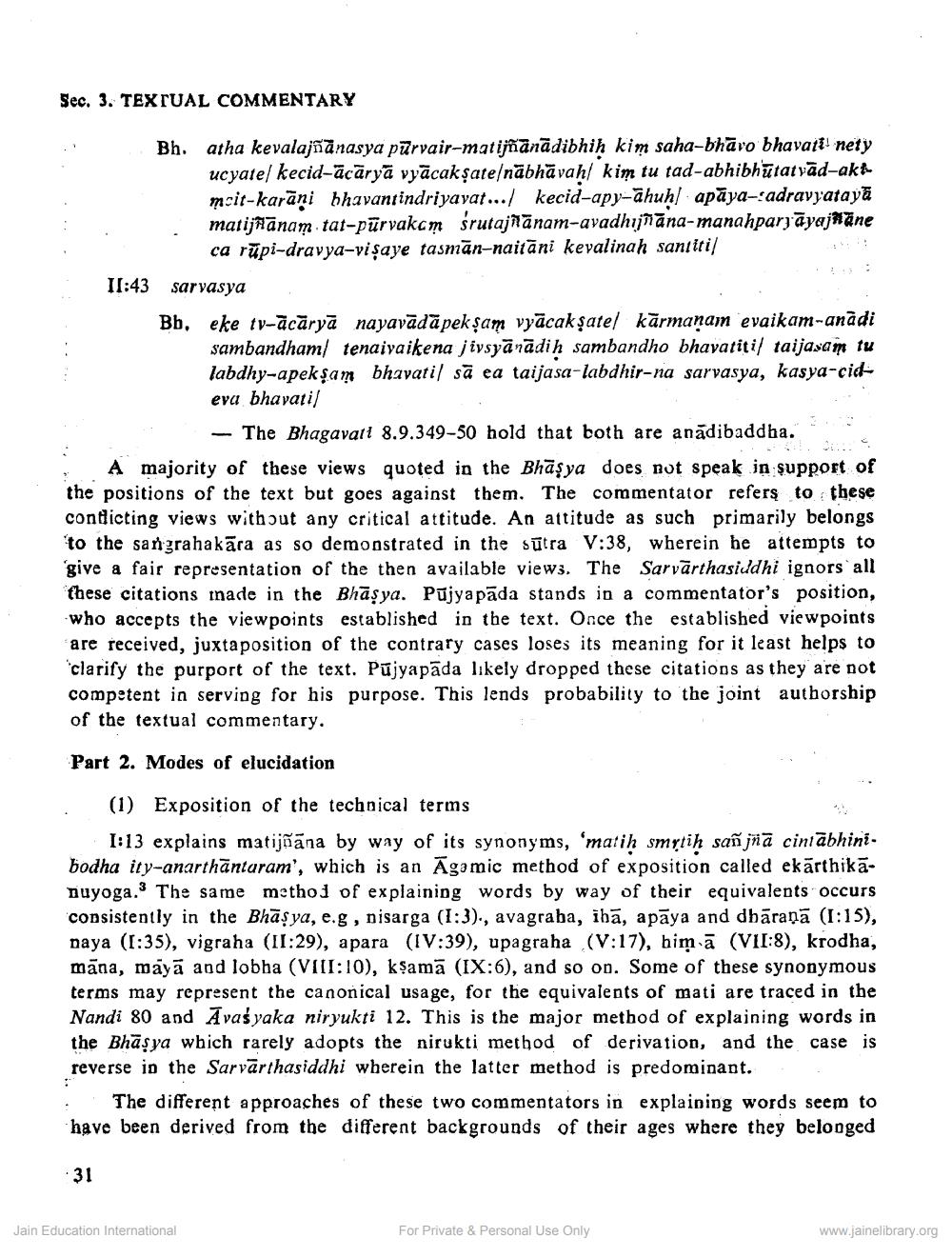________________
Sec. 3. TEXTUAL COMMENTARY
Bh. atha kevalajñānasya pūrvair-matijñānādibhih kim saha-bhavo bhavati' nety
ucyatel kecid-ācāryā vyācak şate nābhāvah/ kim tu tad-abhibhūtatvād-akt mcit-karāni bhavantindriyavat.../ kecid-apy-āhuh/ apāya-'adravyatayā matijfānam tat-pürvakom srutajñānam-avadhijñāna-manahparyāyajnane
ca rūpi-dravya-visaye tasmān-naitāni kevalinah santiti II:43 sarvasya Bb. eke tv-ācāryā nayavādāpek şam vyācakşatel kārmanam evaikam-anadi
sambandham/ tenaivaike na jivsyānādih sambandho bhayatiti/ taijasam tu labdhy-apekşam bhavati să ea taijasa-labdhir-na sarvasya, kasya-cideva bhayati/
- The Bhagavatt 8.9.349-50 hold that both are anādibaddha.. A majority of these views quoted in the Bhāşya does not speak in support of the positions of the text but goes against them. The commentator refers to these condicting views without any critical attitude. An attitude as such primarily belongs 'to the sangrahakāra as so demonstrated in the sūtra V:38, wherein he attempts to give a fair representation of the then available view3. The Sarvārthasiddhi ignors all these citations inade in the Bhāşya. Pūjyapāda stands in a commentator's position, who accepts the viewpoints established in the text. Once the established viewpoints are received, juxtaposition of the contrary cases loses its meaning for it least helps to clarify the purport of the text. Pujyapāda likely dropped these citations as they are not competent in serving for his purpose. This lends probability to the joint authorship of the textual commentary.
Part 2. Modes of elucidation
(1) Exposition of the technical terms
1:13 explains matijõāna by way of its synonyms, 'matih smrtih saññā cinābhinibodha ity-anarthāntaram', which is an Āgomic method of exposition called ekārthikā. buyoga.The same method of explaining words by way of their equivalents occurs consistently in the Bhāsya, e.g, nisarga (1:3)., avagraba, ihā, apāya and dbāraņā (1:15), naya (:35), vigraha (II:29), apara (IV:39), upagraha (V:17), himā (VII:8), krodha, māna, mayā and lobha (VIII:10), kşamā (IX:6), and so on. Some of these synonymous terms may represent the canonical usage, for the equivalents of mati are traced in the Nandi 80 and Āvas yaka niryukti 12. This is the major method of explaining words in the Bhāşya which rarely adopts the nirukti method of derivation, and the case is
reverse in the Sarvārthasiddhi wherein the latter method is predominant. . · The different approaches of these two commentators in explaining words seem to have been derived from the different backgrounds of their ages where they belonged
-31
Jain Education International
For Private & Personal Use Only
www.jainelibrary.org




